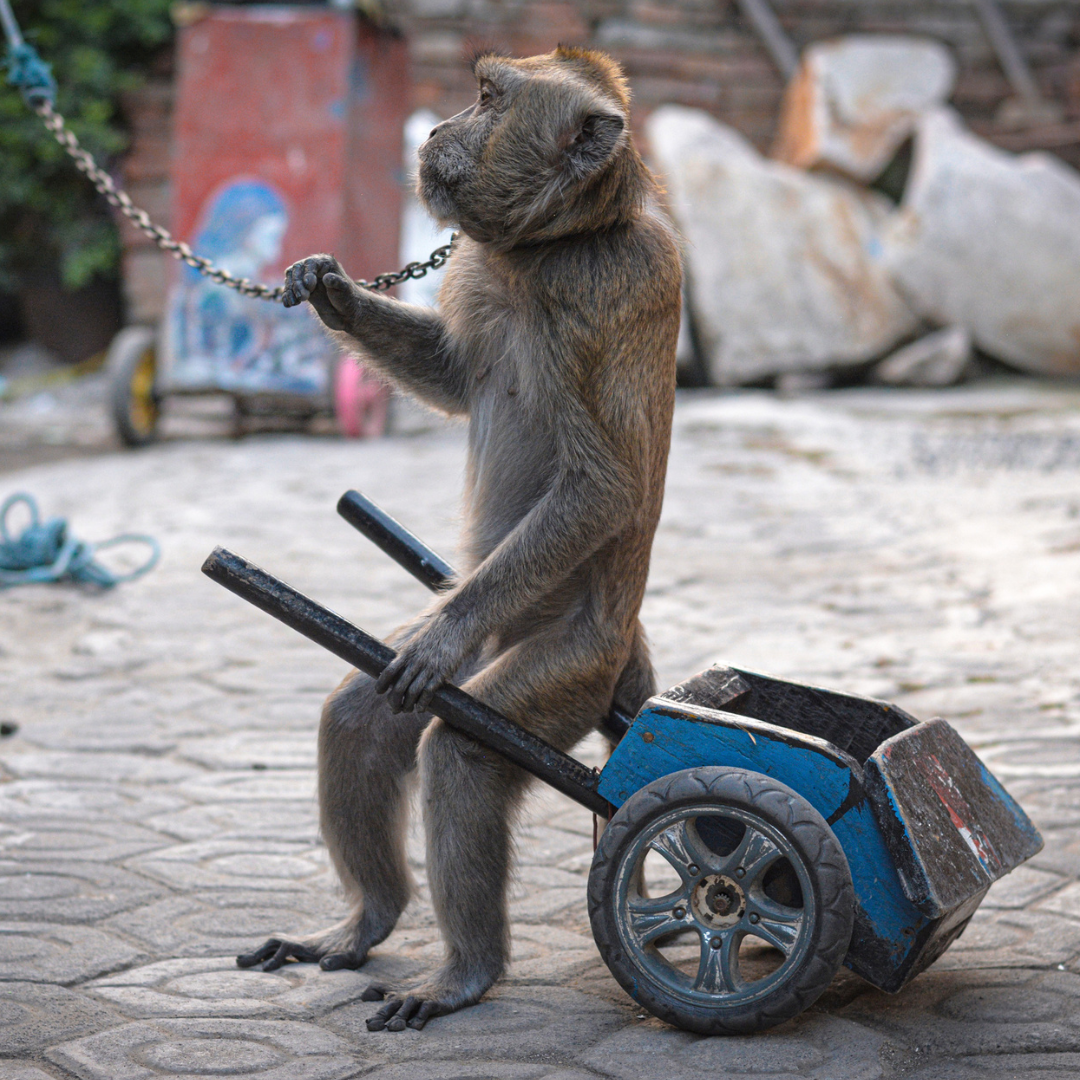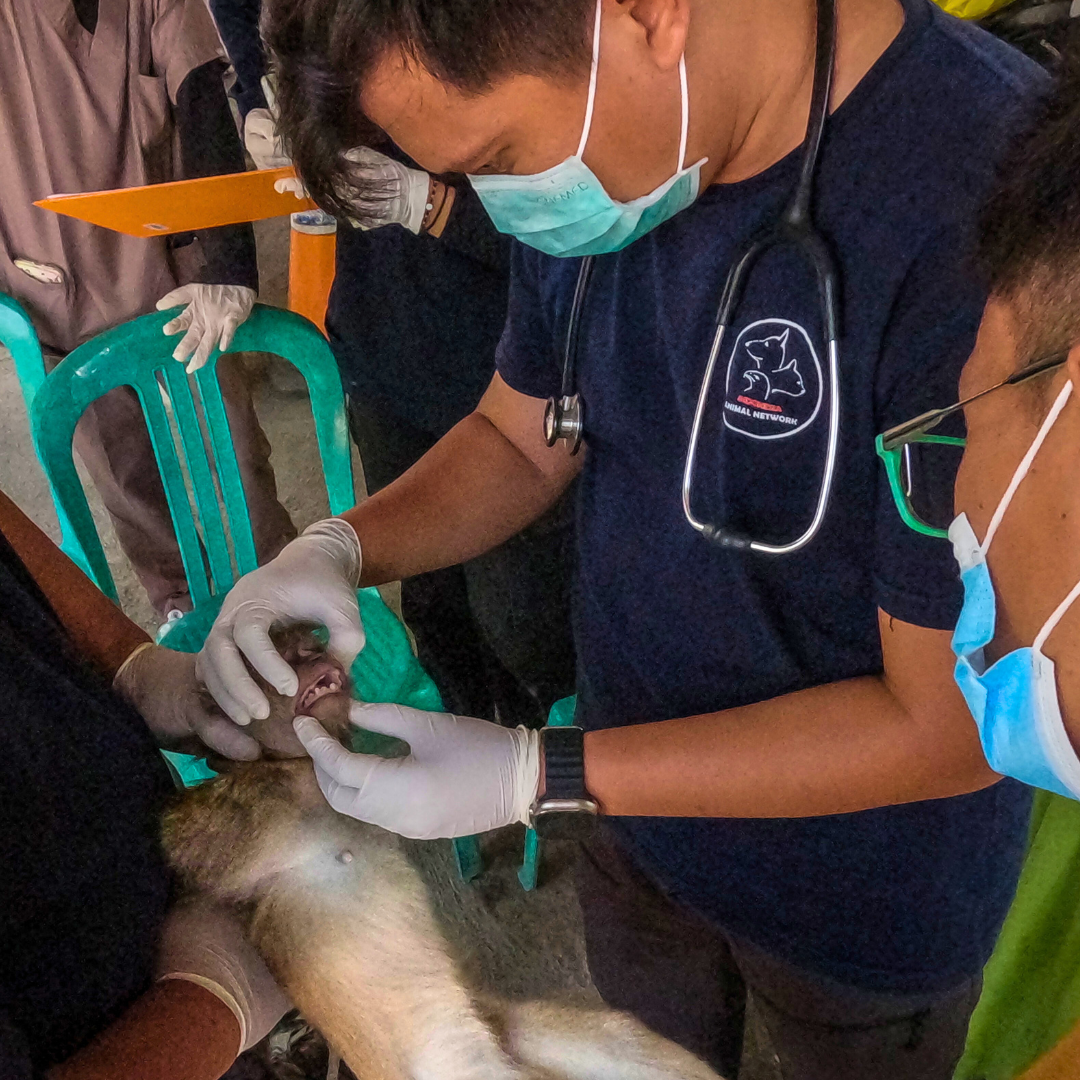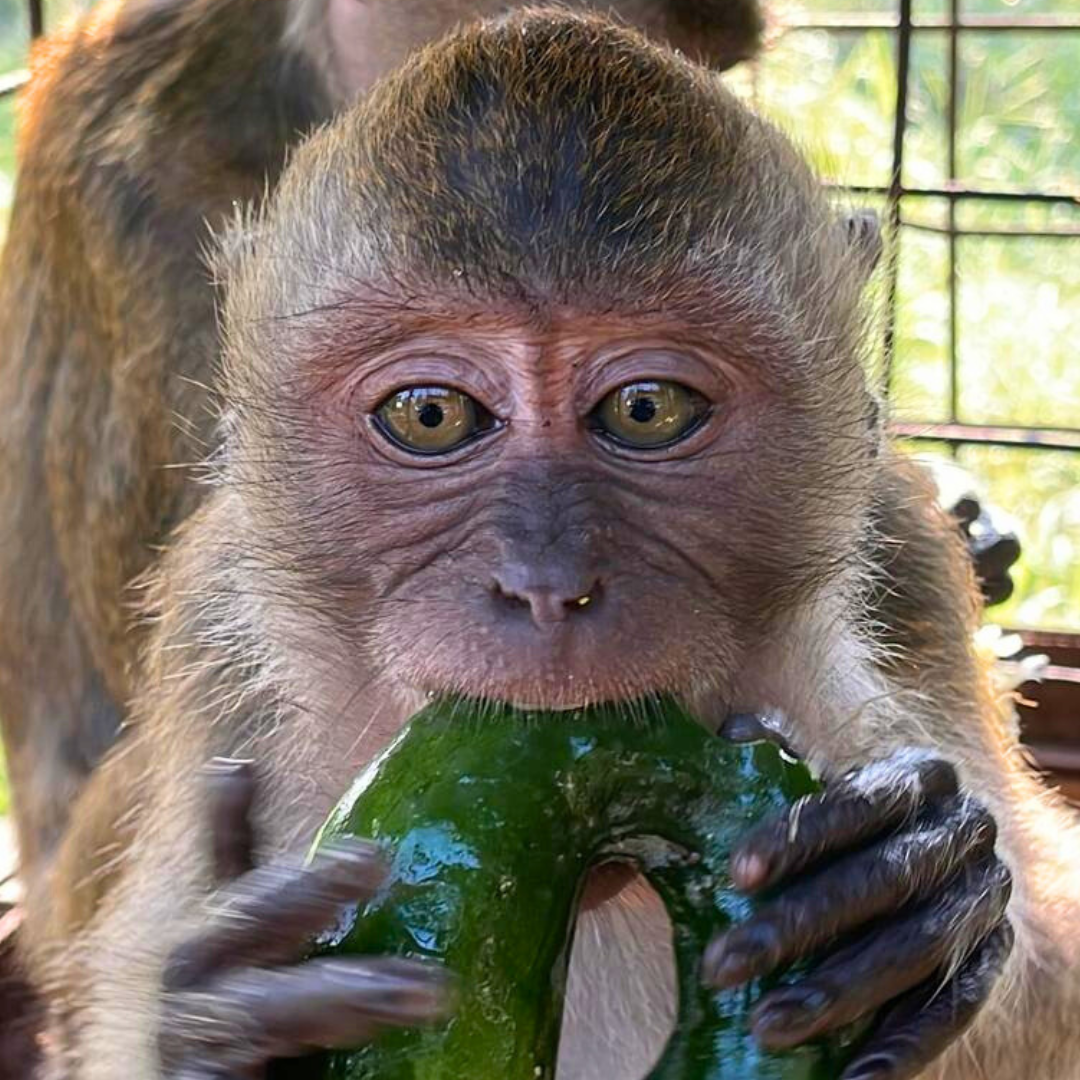Which rescue monkey are you?
Are you sweet and courageous like Unyil or curious and clever like Panjul? Take the quiz and get to know their unique personalities.

Rescued from suffering, 31 young monkeys have been saved from a cruel dance training village. The road to rehabilitation is complex, requiring expert care, patience, and the chance to relearn the skills they were denied.
Images courtesy of Jakarta Animal Aid Network

Stolen from the wild as infants, their mothers shot before their eyes, these helpless young monkeys endure unthinkable cruelty.
From just eight months old, they are starved, beaten, hanged, and chained by the neck. Forced into masks and doll-like costumes, they are trained through fear and pain to dance, ride bicycles, and perform tricks for passing tourists.
This suffering is real, and the impact on these sensitive animals is devastating.

Thanks to our supporters and local partner, Jakarta Animal Aid Network (JAAN), 31 young macaques have been saved from a brutal ‘dance training village.’ They have been safely relocated to JAAN’s rehabilitation centre in Cikole, West Java, which has the expertise and infrastructure to give them high-quality care.
These monkeys often arrive with painful, infected wounds, worms, and deep emotional scars from years of neglect and abuse. Yet, our partners have seen the incredible transformation that love and care can bring.
With just a little compassion, these once-traumatised monkeys begin to heal, mentally and physically thriving and reclaiming the joy they deserve.
Your support can aid every step of their recovery. As we share their stories, milestones, and path to healing, you'll see the impact of your generosity (and feel the joy of supporting their steps toward freedom).

Are you sweet and courageous like Unyil or curious and clever like Panjul? Take the quiz and get to know their unique personalities.
Give them the chance to heal and return to the wild where they belong
Your compassionate gift today can make a lasting difference by providing expert veterinary care during their rehabilitation and release and helping previously exploited monkeys relearn how to socialise. Your support will also help us continue to lobby for a nation-wide ban on the ‘Dancing Monkeys’ trade in Indonesia, working towards a future where no monkey has to suffer this exploitation again.
Explore the impact of Global Wildlife Farming: exploitation, risks, and urgent calls for change
Wildlife
Would a real responsible traveller have captive wildlife entertainment on their wish list?
Wildlife
Together we can drive down consumer demand and expose the lies of businesses that profit from cruelly exploiting wild animals.